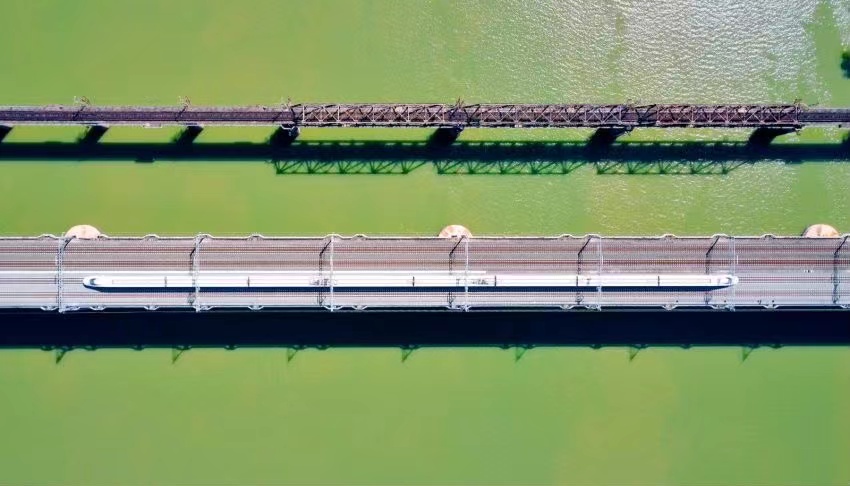
The Nanning-Chongzuo section of Nanning-Pingxiang High Speed Railway in south China’s Guangxi Zhuang Autonomous Region was put into operation on December 5, slashing the travel time between the two cities to 52 minutes from over two and a half hours.
With a route length of 201 kilometers, the Nanning-Pingxiang High Speed Railway, located in southwest Guangxi, connects the capital city Nanning with and Pingxiang situated at the China-Vietnam border. The entire construction of the rail line is divided into two sections, namely the Nanninng-Chongzuo section, and the Chongzuo-Pingxiang section, with the latter currently under construction.
The construction of the 121-kilometer section linking Nanning and Chongzuo started in December 2018, and the railway has a design speed of 250 kilometers per hour, with five stations along the route, including Nanning Railway Station, Wuxu Airport Railway Station, Fusuinan Railway Station, Qujiunan Railway Station, and Chongzuonan Railway Station. During its early stage of operation, the local group operated five pairs of trains every day. It only takes 15 minutes to arrive at the Nanning Wuxu International Airport and 52 minutes to reach Chongzuonan Railway Station from Nanning Railway Station.
Before the railway was put into operation, relevant departments conducted integrated commissioning and test, inspection & acceptance, as well as safety assessments in line with various standards and criteria, and made optimized adjustments to the track conditions, the pantograph-OCS performance, the train control system, as well as the communication and signaling system. Currently, the railway has met all conditions for safety transport and stable operation. The operation of the line will further improve the railway network in Guangxi and facilitate the traveling of local residents along the route, and bears great significance of promoting the development in ethnic minority areas and better serving the construction of the China-ASEAN Free Trade Area.
 附件:
附件: